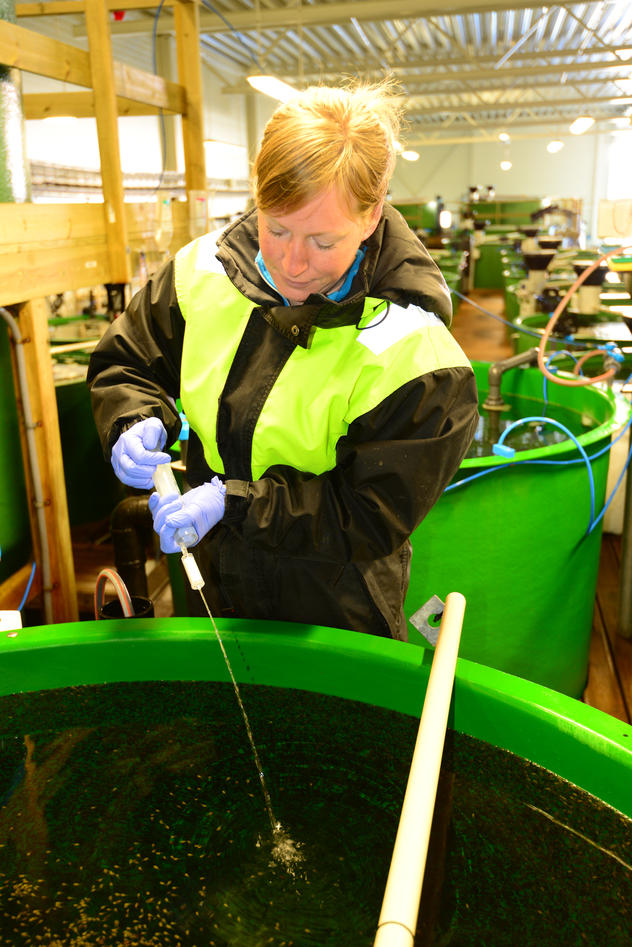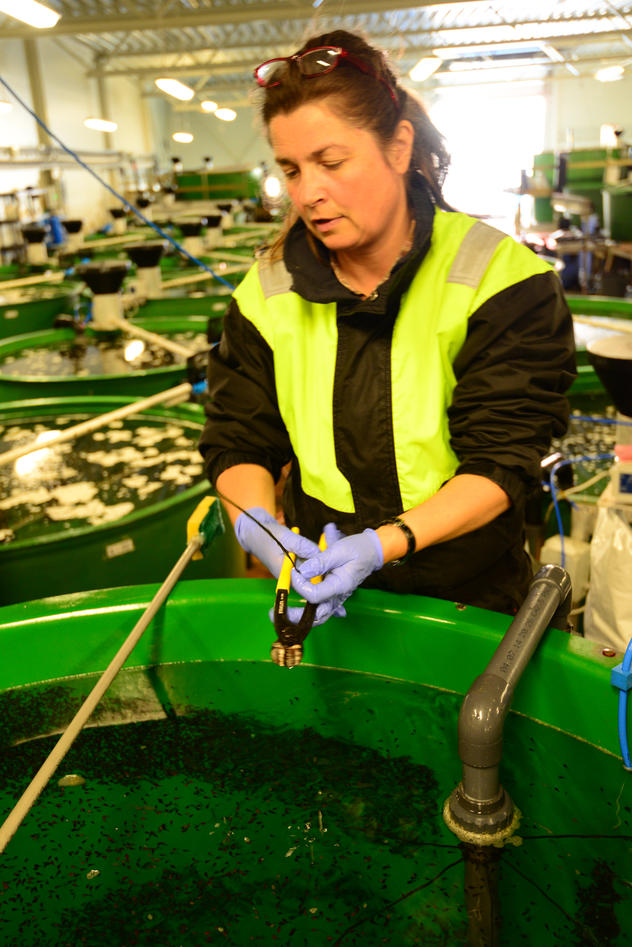About the Monitor Project
Hovedinnhold
MONITOR is a 4-year project funded by the Research Council of Norway. It is collaboration between the University of Bergen, the Norwegian Veterinary Institute and three land-based closed fish farms.
New technology allows land based systems for closed fish farms; however, this technology has also met new challenges when it comes to fish health and stabile water chemistry. Bacteria that are pathogenic for fish can be present in the fish farms in low abundance, as part of the normal material flora, and can also live in established biofilms. From here they can cause illness in fish and fry; especially if the fish is damaged, stressed or has a poor immune response.
This project includes three closed fish farms: a flow-through system for lump fish at Vest Akva Base, a recirculating aquaculture system (RAS) for post smolt salmon at Erko Settefisk, and a flow-through system called “the Egg” for salmon at Hauge Aqua. Regular sampling in the fish farms will give good data of each batch of fish. We sample fish surface (skin and gills), biofilm, water and medium from biofilter if present. Samples are brought to the University of Bergen where the material is analyzed.
In this project we will use modern methods commonly applied for analyzes of microbial ecology studies for monitoring the development of microbial community structures and pathogenic bacteria in closed fish farms. The goal is to identify and track bacteria, preferably consortia of bacteria, which can cause either good or bad conditions for the fish. We also wish to monitor the abundance pathogenic bacteria so that fish farms can be notified in due time, in order to prevent major disease outbreaks.
In addition, the bacterium Tenacibaculum has been chosen as a model organism due to the challenges of winter ulcers and skin infections often caused by this microorganism in colder waters. In-depth studies of its natural habitat in the fish farms, cell to cell communication (quorum sensing) and varying virulence in different Tenacibaculum strains will provide new knowledge on how Tenacibaculum can occur as a fish pathogenic bacterium at given conditions, and also on the mechanism behind winter ulcer establishment and development om fish skin.

